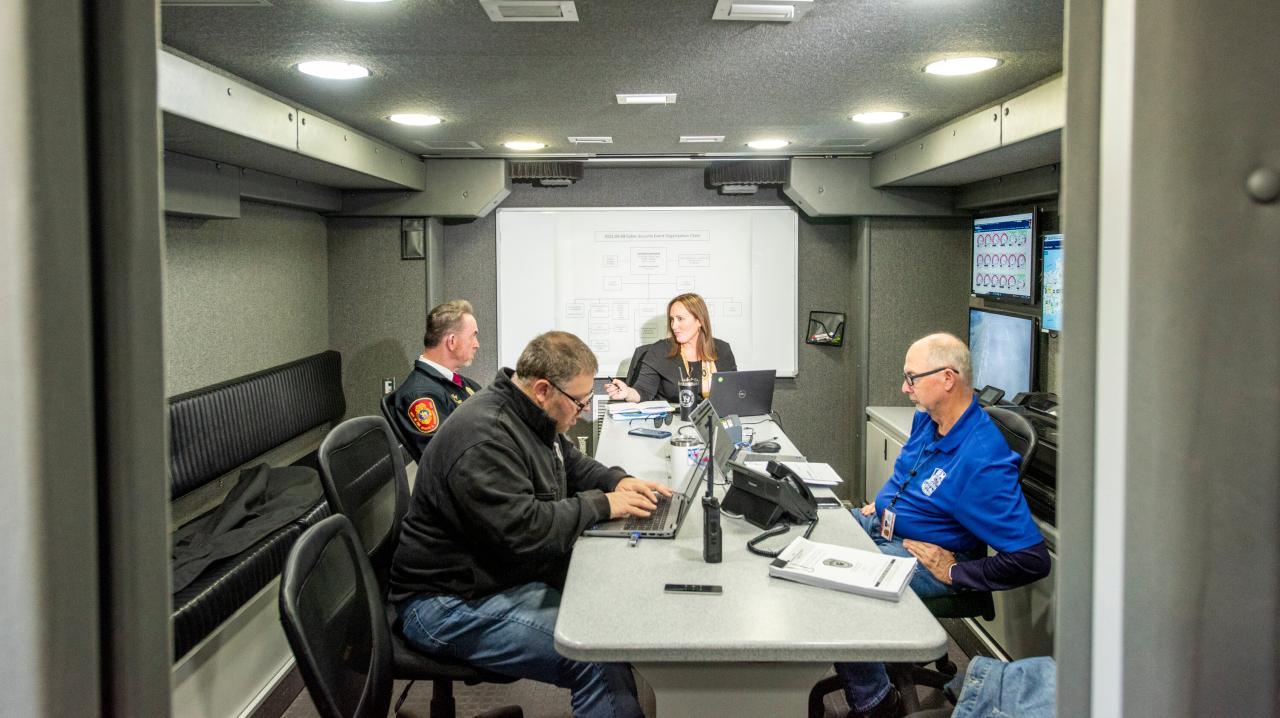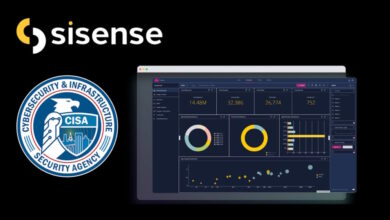
Cyber Attack on New York Transportation Authority
Cyber attack on New York Transportation Authority – the chilling prospect of a city brought to its knees by a digital assault. Imagine the chaos: stalled subways, gridlocked buses, and a city paralyzed. This isn’t science fiction; it’s a very real threat, and understanding the vulnerabilities and potential consequences is crucial. We’ll delve into the types of attacks, the impact on public safety, the current security measures, and what needs to be done to protect this vital infrastructure.
This post explores the various ways cybercriminals could target the NYCTA, from ransomware attacks crippling fare payment systems to phishing scams compromising sensitive employee data. We’ll look at real-world examples of similar attacks on transportation networks globally, examining the lessons learned and best practices for strengthening cybersecurity defenses. The goal? To shed light on this critical issue and foster a discussion about safeguarding New York City’s transportation lifeline.
Types of Cyberattacks Targeting NYC Transportation
The New York City Transportation Authority (NYCTA), responsible for one of the world’s largest and most complex public transportation systems, faces a significant cybersecurity challenge. Its extensive network of physical infrastructure, interconnected digital systems, and vast amounts of sensitive data make it a prime target for various cyberattacks. Understanding the potential attack vectors and their consequences is crucial for effective mitigation strategies.
Potential Cyberattack Vectors Targeting the NYCTA
The NYCTA’s sprawling infrastructure presents numerous vulnerabilities. A successful attack could have far-reaching consequences, impacting millions of daily commuters. The following table categorizes potential cyberattack vectors by their impact:
| Attack Type | Target System | Potential Impact | Mitigation Strategy |
|---|---|---|---|
| Ransomware | Fare payment system, signaling systems, operational control systems | Service disruption (delays, cancellations), financial loss, data breach, reputational damage | Regular backups, robust security protocols, employee training, multi-factor authentication, incident response plan |
| Phishing | NYCTA employees | Data breach (employee credentials, sensitive information), malware infection, lateral movement within the network | Security awareness training, strong password policies, multi-factor authentication, email filtering |
| Denial-of-Service (DoS) | Website, mobile applications, signaling systems | Service disruption (website inaccessibility, app malfunction, transportation delays), loss of revenue | Redundant systems, DDoS mitigation techniques, network monitoring, capacity planning |
| SQL Injection | Databases containing passenger information, fare data, employee records | Data breach (sensitive passenger and employee data), identity theft, financial loss, regulatory fines | Input validation, parameterized queries, regular security audits, database encryption |
| Man-in-the-Middle (MitM) Attack | Communication channels between various systems | Data interception (sensitive information, operational data), manipulation of data, service disruption | End-to-end encryption, secure communication protocols, network segmentation |
Vulnerabilities of NYCTA Infrastructure
The NYCTA’s infrastructure, encompassing legacy systems alongside newer technologies, presents a complex attack surface. Older systems may lack robust security features, while the integration of diverse technologies introduces potential points of failure. The interconnected nature of the system means that a successful attack on one component can cascade through the entire network. For example, a compromised fare payment system could potentially provide access to other systems through shared networks or databases.
The reliance on third-party vendors also introduces additional security risks.
Consequences of a Ransomware Attack on the Fare Payment System
A successful ransomware attack on the NYCTA’s fare payment system could have catastrophic consequences. The immediate impact would be service disruption, leading to widespread delays, cancellations, and commuter frustration. Millions of riders could be affected, resulting in significant economic losses for both individuals and businesses. Furthermore, the theft or exposure of sensitive passenger data, including personal information and financial details, would result in significant reputational damage and potential legal liabilities.
The financial costs associated with restoring the system, paying the ransom (if demanded), and addressing the fallout could be astronomical. The 2017 NotPetya ransomware attack, which crippled global businesses, serves as a stark reminder of the potential devastation of such an event. The disruption to the city’s economic activity would be substantial, echoing the widespread consequences seen in similar attacks on critical infrastructure worldwide.
Impact on Public Safety and Transportation Services
A successful cyberattack against the New York City Transportation Authority (NYCTA) wouldn’t just be an inconvenience; it could have devastating consequences for public safety and the city’s overall functionality. The interconnected nature of the NYCTA’s systems means that a breach in one area could quickly cascade, creating widespread disruption and potentially endangering lives. The sheer volume of people reliant on the subway, buses, and other transit options daily makes the potential impact exceptionally severe.The ripple effects of such an attack extend far beyond simple delays.
Disruptions to transportation directly impact emergency services, supply chains, and the daily lives of millions. Consider the potential chaos if emergency responders are unable to reach critical incidents due to gridlock caused by a system-wide transit failure. The economic impact would be equally staggering, with businesses losing revenue and productivity grinding to a halt.
Subway Service Disruption, Cyber attack on new york transportation authority
A cyberattack could manifest in various ways, severely impacting subway operations. Malicious code could disrupt signaling systems, leading to delays, cancellations, and potentially even complete shutdowns of lines. Compromised fare collection systems could result in widespread fare evasion and revenue loss. Further, attacks targeting communication systems could leave staff unable to coordinate responses to incidents or effectively communicate with passengers.
The resulting confusion and overcrowding could lead to safety hazards and even panic. For example, a denial-of-service attack overwhelming the signaling system could bring multiple lines to a standstill during peak hours, leaving thousands stranded and potentially creating dangerous overcrowding in stations.
Bus Route Disruptions and Other Transportation Modes
Similar disruptions could affect bus routes. Compromised GPS systems could lead to buses going off-route, delays, and difficulties in tracking vehicles. Real-time information systems crucial for passengers could also be disabled, leaving commuters stranded and unsure of alternative routes. The impact extends beyond just buses and subways; attacks could cripple the city’s overall transportation network, impacting commuter trains, ferries, and even ride-sharing services which rely on digital mapping and communication.
The cascading effect of even a relatively small attack on one mode of transportation could lead to massive gridlock across the entire city.
Hypothetical Phishing Attack Scenario
A successful phishing attack targeting NYCTA employees could lead to a significant system compromise. This scenario Artikels a chronological progression:
- Phase 1: Initial Compromise (Day 1): A seemingly legitimate email is sent to several NYCTA employees, containing a malicious attachment or link. The email appears to originate from a trusted source, such as a senior manager or an IT vendor. One employee clicks the link, unwittingly downloading malware onto their work computer.
- Phase 2: System Penetration (Days 2-3): The malware spreads silently across the NYCTA’s internal network, gaining access to sensitive data and systems. The attacker uses the compromised employee’s credentials to move laterally, accessing more privileged accounts and escalating their access.
- Phase 3: Data Exfiltration and System Disruption (Days 4-7): The attacker begins exfiltrating sensitive data, including passenger information, employee records, and operational data. They also deploy ransomware, encrypting critical systems and demanding a ransom for decryption. Simultaneously, they launch denial-of-service attacks to disrupt normal operations.
- Phase 4: Impact and Recovery (Days 7+): The ransomware attack cripples NYCTA’s operations, leading to widespread service disruptions. The exfiltrated data is potentially leaked online, resulting in reputational damage and legal consequences. The NYCTA must invest significant resources in recovery efforts, including restoring systems, investigating the breach, and notifying affected individuals.
This hypothetical scenario highlights the potential for a seemingly small initial attack to escalate into a major crisis, impacting public safety, the economy, and the city’s overall functionality. The interconnectedness of the NYCTA’s systems makes them particularly vulnerable to cascading failures.
Cybersecurity Measures and Protective Strategies
The New York City Transit Authority (NYCTA) operates a massive and complex transportation network, making it a prime target for cyberattacks. Protecting this critical infrastructure requires a multi-layered approach to cybersecurity, encompassing both preventative and reactive measures. The effectiveness of these measures directly impacts the reliability and safety of millions of daily commuters.The NYCTA employs a range of cybersecurity technologies to defend against threats.
These measures are constantly evolving to adapt to the ever-changing landscape of cybercrime. Understanding the strengths and weaknesses of these technologies is crucial for assessing the overall effectiveness of the NYCTA’s cybersecurity posture.
Current Cybersecurity Measures Implemented by the NYCTA
The NYCTA utilizes a combination of strategies to protect its systems. This includes robust firewalls to control network access, intrusion detection systems (IDS) to monitor network traffic for malicious activity, and endpoint protection software on individual devices to prevent malware infections. Regular security audits and vulnerability assessments are conducted to identify and address potential weaknesses. Employee training programs emphasize security awareness and best practices, aiming to mitigate risks associated with human error.
Furthermore, the NYCTA likely employs data loss prevention (DLP) tools to monitor and prevent sensitive data from leaving the network unauthorized. Incident response plans are in place to handle and mitigate the impact of successful attacks. While specific details about the NYCTA’s security measures are not publicly available for security reasons, these general strategies are commonly employed by organizations managing critical infrastructure.
Comparison of Cybersecurity Technologies Applicable to the NYCTA’s Infrastructure
Firewalls act as the first line of defense, controlling network access and blocking unauthorized connections. Intrusion detection systems (IDS) passively monitor network traffic for suspicious patterns, alerting security personnel to potential threats. Intrusion prevention systems (IPS), a more active approach, can automatically block malicious traffic. Endpoint protection software secures individual computers and devices, preventing malware from executing and protecting sensitive data.
These technologies work in concert to provide a comprehensive defense. For example, a firewall might block an initial connection attempt, while an IDS would detect and alert on any subsequent attempts to bypass the firewall. Endpoint protection would then prevent the malware from executing even if it managed to reach a device. The effectiveness of each technology depends on its configuration and integration with other security measures.
A poorly configured firewall, for instance, could render the entire system vulnerable.
Recommended Improvements to the NYCTA’s Cybersecurity Posture
Prioritizing improvements requires a thorough risk assessment identifying vulnerabilities and their potential impact. The following recommendations are based on common cybersecurity best practices and the inherent vulnerabilities of large-scale transportation systems.
- Enhanced Threat Intelligence: Proactive threat intelligence gathering and analysis can provide early warning of emerging threats and allow for timely mitigation strategies. This involves leveraging external threat feeds and internal security monitoring to identify patterns and predict potential attacks.
- Improved Network Segmentation: Dividing the network into smaller, isolated segments can limit the impact of a successful breach. If one segment is compromised, the attacker’s access to other critical systems will be restricted.
- Advanced Threat Detection: Implementing advanced threat detection technologies, such as machine learning-based solutions, can help identify sophisticated attacks that might evade traditional security measures. These technologies can analyze network traffic and system logs to detect anomalies that indicate malicious activity.
- Regular Security Awareness Training: Frequent and engaging security awareness training for employees is crucial to reduce the risk of human error, a major factor in many cyberattacks. Training should cover phishing scams, social engineering techniques, and safe password practices.
- Incident Response Planning and Testing: Regular testing and refinement of incident response plans are critical to ensure effectiveness in the event of a cyberattack. This includes simulating real-world scenarios to identify weaknesses and improve response times.
- Zero Trust Security Model Implementation: Adopting a zero-trust security model, which assumes no implicit trust, can significantly enhance security by verifying every user and device attempting to access the network, regardless of location.
Legal and Regulatory Ramifications: Cyber Attack On New York Transportation Authority

A cyberattack on the New York City Transportation Authority (NYCTA) wouldn’t just be a technological failure; it would trigger a cascade of legal and regulatory consequences, impacting the agency, its contractors, and potentially even riders. The legal landscape surrounding such incidents is complex, involving federal and state laws designed to protect critical infrastructure and ensure public safety.The NYCTA operates under a multifaceted regulatory framework.
The recent cyber attack on the New York Transportation Authority really highlighted the vulnerability of critical infrastructure. This incident underscores the urgent need for robust security measures, and understanding how to manage cloud security effectively is key. Learning more about solutions like bitglass and the rise of cloud security posture management is crucial for preventing future attacks of this scale and protecting our transportation systems.
The MTA’s experience serves as a stark reminder of the stakes involved.
Federal laws like the Cybersecurity Information Sharing Act (CISA) mandate reporting of significant cybersecurity incidents to the Cybersecurity and Infrastructure Security Agency (CISA). Failure to comply with these reporting requirements can lead to substantial fines and penalties. Additionally, state laws in New York, focusing on data privacy and critical infrastructure protection, impose further obligations on the NYCTA.
Non-compliance with these regulations can result in legal action from state agencies and private citizens.
Liability and Penalties for the NYCTA
Following a significant cyberattack, the NYCTA could face a wide range of liabilities. These could include financial penalties for non-compliance with federal and state regulations, as mentioned above. Beyond regulatory fines, the NYCTA could be sued for damages by riders or other affected parties. For example, if a cyberattack disrupted service, causing significant delays or injuries, individuals could file lawsuits claiming negligence or breach of duty.
The recent cyber attack on the New York Transportation Authority really highlighted the need for robust, secure systems. Thinking about how to build those systems faster and more efficiently, I was reading about domino app dev the low code and pro code future , which could revolutionize how we approach critical infrastructure security. Imagine the possibilities for quicker patching and improved response times in situations like the MTA attack – a more agile approach is definitely needed.
The potential costs associated with legal fees, settlements, and judgments could be substantial. The severity of the penalties would depend on the extent of the damage caused by the attack, the NYCTA’s response, and the presence of any negligence or willful misconduct. A major disruption causing widespread delays and economic losses could result in significantly higher penalties than a smaller, contained incident.
For example, the 2017 NotPetya ransomware attack caused billions of dollars in damages globally, demonstrating the potential scale of financial consequences.
NYCTA’s Responsibilities in Reporting and Mitigating Cyber Incidents
The NYCTA has a clear responsibility to proactively mitigate cyber risks and respond effectively to incidents. This includes implementing robust cybersecurity measures, conducting regular security assessments, and developing comprehensive incident response plans. Under CISA guidelines, the NYCTA is obligated to promptly report significant cybersecurity incidents to CISA. This reporting must include details about the nature and scope of the incident, the impact on operations, and the steps taken to mitigate the attack.
Failure to promptly report an incident could lead to additional penalties. Beyond federal reporting requirements, the NYCTA must also comply with relevant state laws and regulations, which may include specific requirements for data breach notification and public disclosure. Furthermore, the NYCTA’s internal policies and procedures should dictate clear protocols for incident response, including steps for containment, eradication, recovery, and post-incident analysis.
The agency should also conduct regular training for its employees to raise awareness of cybersecurity threats and best practices. This multifaceted approach ensures not only compliance with legal requirements but also the safety and security of the transportation system and its users.
Public Awareness and Response
Improving public communication and awareness surrounding cybersecurity threats and incident response is crucial for the New York City Transportation Authority (NYCTA). Effective communication can minimize panic, ensure public safety, and maintain trust in the system during and after a cyberattack. A proactive approach, including regular public education campaigns and clear, concise communication protocols during incidents, is essential.A well-defined communication strategy should be in place to inform the public about potential risks, response procedures, and service disruptions caused by cyberattacks.
This includes utilizing various communication channels to reach a diverse audience effectively. Examples of successful strategies from other sectors can be adapted to the NYCTA’s unique needs, ensuring the information is easily accessible and understandable for everyone.
Effective Communication Strategies for Cyberattack Response
The NYCTA needs to develop a multi-faceted approach to public communication, leveraging various channels to reach the widest possible audience. This involves proactively educating the public about cybersecurity threats and passively disseminating timely and accurate information during and after a cyberattack. Regular public service announcements (PSAs) explaining common cyber threats and how to identify suspicious activity can significantly raise awareness.
Moreover, clear and concise messaging during an actual incident will help prevent misinformation and panic.
Public Information Dissemination Plan
In the event of a major cyber incident affecting transportation services, a structured plan for information dissemination is vital. This plan should Artikel communication channels, target audiences, message types, and timing for each communication. This structured approach will ensure consistent and timely updates, preventing confusion and promoting trust in the NYCTA’s response capabilities. The plan should also include mechanisms for handling misinformation and addressing public concerns effectively.
Below is an example of such a plan:
| Communication Channel | Target Audience | Message Type | Timing |
|---|---|---|---|
| NYCTA Website and Mobile App | All riders and the general public | Service alerts, updates on the incident, and instructions for alternative transportation | Immediately upon incident confirmation |
| Social Media (Twitter, Facebook, Instagram) | All riders and the general public | Short, frequent updates, links to the NYCTA website, and responses to public queries | Immediately upon incident confirmation, frequent updates throughout the event |
| Email Alerts (Subscribed users) | Registered users of the NYCTA app or website | Detailed updates, including the impact on specific lines or stations | Immediately upon incident confirmation, with subsequent updates as needed |
| Traditional Media (Press Releases, TV, Radio) | All riders and the general public | Official statements, explanations of the incident, and reassurances of safety | Within 1 hour of incident confirmation, with further briefings as needed |
| Emergency Alert System (EAS) | Residents within affected areas | Urgent alerts about significant service disruptions requiring immediate action | Only in case of severe service disruptions or significant safety risks |
Case Studies of Similar Attacks

Understanding past cyberattacks on transportation systems is crucial for improving the cybersecurity posture of the New York City Transportation Authority (NYCTA). By examining these incidents, we can identify common vulnerabilities, assess potential impacts, and learn from effective mitigation strategies employed elsewhere. This analysis will highlight the parallels between these past attacks and potential threats to the NYCTA, ultimately informing the development of robust protective measures.
Several significant cyberattacks targeting global transportation systems offer valuable insights into the challenges and potential consequences of such incidents. These attacks, while varying in scale and target, share common threads of exploited vulnerabilities and resulting disruptions. Analyzing these case studies allows us to anticipate and prepare for similar threats against the NYCTA.
The 2017 Ukrainian Power Grid Attack
The 2017 attack on Ukraine’s power grid serves as a stark reminder of the potential for cascading failures resulting from successful cyberattacks. This attack, attributed to a sophisticated nation-state actor, involved the deployment of malware to compromise industrial control systems (ICS) managing power distribution.
- Cause: Malware specifically designed to target ICS components, exploiting vulnerabilities in outdated software and insecure network configurations.
- Impact: Widespread power outages affecting hundreds of thousands of people, highlighting the potential for significant societal disruption.
- Lessons Learned: The importance of robust ICS security, including regular software updates, network segmentation, and advanced threat detection systems.
The vulnerabilities exploited in the Ukrainian power grid attack – outdated software and insecure network configurations – are also relevant to the NYCTA’s system. The interconnected nature of the subway system and its reliance on ICS for critical operations make it susceptible to similar attacks. The scale of potential disruption in New York City would be significantly greater than in Ukraine, given the city’s size and dependence on the subway.
The 2016 San Francisco Muni Hack
The 2016 cyberattack against the San Francisco Municipal Transportation Agency (SFMTA) demonstrated the vulnerability of transit systems to ransomware attacks. This attack targeted the agency’s computer systems, encrypting data and disrupting service.
- Cause: Phishing email leading to the execution of ransomware on SFMTA’s systems.
- Impact: Disruption of fare collection systems, affecting the ability to collect fares and track ridership. While not as catastrophic as a complete shutdown, the incident highlighted the importance of maintaining reliable fare collection systems.
- Lessons Learned: The need for comprehensive employee security awareness training, robust endpoint protection, and data backup and recovery procedures.
The SFMTA attack highlights the vulnerability of NYCTA to phishing attacks and ransomware. The NYCTA’s extensive computer systems and the potential impact on fare collection and operational data make it a prime target for similar attacks. Effective employee training and robust security protocols are crucial in mitigating this risk.
Best Practices Adopted by Other Transportation Agencies
Several transportation agencies globally have implemented best practices to enhance their cybersecurity resilience. These strategies focus on a multi-layered approach to security, encompassing both technical and operational aspects.
- Regular Security Audits and Penetration Testing: Proactive identification of vulnerabilities through regular assessments.
- Robust Network Segmentation: Isolating critical systems from less critical ones to limit the impact of a breach.
- Advanced Threat Detection and Response Systems: Implementing systems that can detect and respond to sophisticated cyberattacks in real-time.
- Comprehensive Employee Security Awareness Training: Educating employees about phishing attacks, social engineering, and other cybersecurity threats.
- Incident Response Planning: Developing detailed plans to effectively respond to and recover from cyberattacks.
- Strong Data Backup and Recovery Procedures: Ensuring that critical data can be recovered quickly and efficiently in the event of a data breach.
Closure
The vulnerability of the New York City Transportation Authority to cyberattacks is a serious concern, impacting not only the smooth flow of daily life but also public safety and the city’s overall resilience. While the NYCTA has implemented security measures, continuous improvement and proactive strategies are vital. Strengthening cybersecurity, improving public awareness, and learning from past attacks are key steps in mitigating future risks.
Let’s hope that through vigilance and collaboration, we can keep our city moving.
FAQ Corner
What specific data is most vulnerable in a NYCTA cyberattack?
Passenger data (including payment information), employee records, operational data controlling the transit system, and sensitive internal communications are all high-value targets.
How could a cyberattack affect emergency services?
Disrupted communication systems, compromised surveillance footage access, and difficulties in coordinating emergency response teams could severely hinder emergency services during and after a major cyberattack.
What role does public awareness play in preventing attacks?
Educating the public about phishing scams and other social engineering tactics can significantly reduce the likelihood of successful attacks that rely on human error.
What are the potential insurance implications for the NYCTA after an attack?
The NYCTA’s insurance coverage and potential payouts would depend on the specifics of the attack, the extent of the damage, and the terms of their existing cybersecurity insurance policies. Significant legal battles could also ensue.





